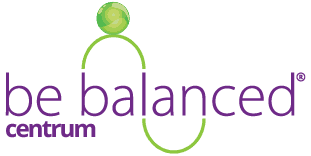Bolest třísla při běhu – zdroje a příčiny
Bolesti třísel či třísla jsou celkem častým problémem běžců. Mohou se objevit náhle po větším zatížení, typicky po dlouhém závodě. Buď přímo při něm, nebo až poté, co usednete k vydatné večeři či do dopravního prostředku vezoucího vás domů. Pak se chcete postavit a ono to tak úplně nejde. Kyčel nejde natáhnout a palčivě bolí tříslo. Musíte zkrátit krok a doufáte, že to do rána přejde. Může to být lepší, ale krok stále zůstává kratší a špatně se z nohy odráží. Někdy se potíže rozvíjí postupně. Pojďme si trochu rozebrat zdroje a příčiny těchto obtíží. Jaké chyby při běhu mohou tyto potíže způsobit a jaká existují nápravná cvičení?
Bolest z přetížení kyčelního kloubu
Bolest vlastního kyčelního kloubu se projevuje právě v oblasti třísla. Pokud bolí kyčel z boku – bolí pravděpodobně „jen“ svalové úpony. To je rozhodně lepší varianta. Bolest v třísle může znamenat, že kyčelní kloub už je poškozen, nebo si ho přetěžujeme tak, že k strukturálnímu poškození časem dojde. Poškození může být na úrovni chrupavčitého lemu kloubní jamky, k čemuž dojde většinou chronicky nevhodným zatížením – páčením kyčle. Nebo na úrovni kostí, v tom případě se jedná o artrózu. Taková artróza se nemusí týkat celého kloubu a nemusí být ani vidět na klasickém rentgenovém snímku. V kyčli se totiž často vytvoří velmi lokalizovaná artróza, zobáček na hlavici nebo okraji jamky v místě, kde kosti příliš a nepřirozeně narážejí na sebe. Bolest se klasicky šíří po přední straně stehna až ke koleni. Může se stát, že zpočátku bolí pouze koleno.
ČTĚTE TAKÉ: Běžecká zranění – pochopte jejich příčinu a začněte od mozku
Tuto bolest není radno dlouho přemáhat a přecházet. Kyčel je velmi důležitý nosný kloub. Rozhoduje o našem stereotypu chůze. Pokud je v kloubu nějaké bolestivé omezení či překážka, stereotyp chůze se okamžitě mění. Začne se ovšem přetěžovat jiná oblast. Nejčastěji to je bederní páteř. Důsledkem omezení v kyčli je pak typicky výhřez ploténky. I to může být první příznak špatně postavené kyčle. Zcela logicky pak není vhodné řešit pouze výhřez v zádech, protože dokud nedáme do pořádku kyčel, bederní páteř bude stále přetěžovaná.
K těmto obtížím se snadněji a dříve dopracují lidé, kteří k tomu už mají nějakou anatomickou predispozici. Typicky jsou to lidé, kteří trpí vrozenou vývojovou vadou kyčle. Tedy ti, co nosili třmínky, peřinky či dvojité balení jako miminka. Plno dětí ale uniklo pozornosti, proto ani o této vývojové vadě neví. Každopádně tito lidé mají kyčelní kloub méně stabilní. Více tedy musejí spoléhat na správnou a dostatečnou práci svalů, která nedokonalou strukturu nahradí. K tomu ale samo dojde velmi těžko. Kloub je nestabilní, tedy se při pohybu páčí a poškozuje se. Není výjimkou, že potíže se objeví už kolem 30. roku věku.
Úponová bolest
Tato bolest často předchází obtížím uvedeným výše. Tříslo je místem úponů velkých svalů stehna. Ve většině případů nás v třísle bolí právě tyto úpony. Takový úpon začne bolet, když je jeho sval ve zvýšeném napětí. Proč některý sval zvýší své napětí? Je to proto, že jiný sval z funkce vypadne. Nebo také proto, že se kloub dostal do nesprávného postavení, které jedny svaly zvýhodňuje a druhé znevýhodňuje. Řešení je tedy nasnadě. Je třeba nastimulovat sval, který je v útlumu, a tím se kloub dostane do správného postavení. Pokud toto trénujeme během dne a snažíme se takové správné postavení udržovat, dojde k vyrovnání svalových napětí a úpon, případně sval, přestává táhnout.
Bolest přenesená z bederní páteře
Uvedli jsme, že omezení v kyčli může způsobovat přetížení až následné poškození v bederní páteři. Proces může být i opačný. Problém v bederní páteři (např. blokáda v bedrech, přetěžování páteře nesprávným zpevněním trupu, výhřez ploténky) může způsobovat také bolesti třísel. Dokonce se může stát, že nebolí záda, ale bolí jen tříslo a přední strana stehna nebo podbřišek. Vy se pak snažíte tříslo stále protahovat a uvolňovat, ale k efektu to nevede. Často spíše k opačnému. Protahováním třísla se často páčíme v bedrech, čímž celou situaci zhoršujeme. Potíže naopak můžeme zlepšit, když budeme zpevňovat centrum těla (core).
Další příčiny
Další, méně častou příčinou je tzv. burzitida – tedy zánět tíhového váčku v oblasti kyčelního kloubu. Ta je dána přetížením opět vlivem určité svalové nerovnováhy v oblasti kyčle. Dále tu jsou různé syndromy uskřinutí kloubního pouzdra apod. Bolest v třísle může být také způsobena tříselnou kýlou. Tu velmi lehce může potvrdit či vyloučit chirurg vyšetřením pohmatem, či s úplnou jistotou ultrazvukem.
Tento seriál pro vás připravujeme ve spolupráci se Sport.cz.

